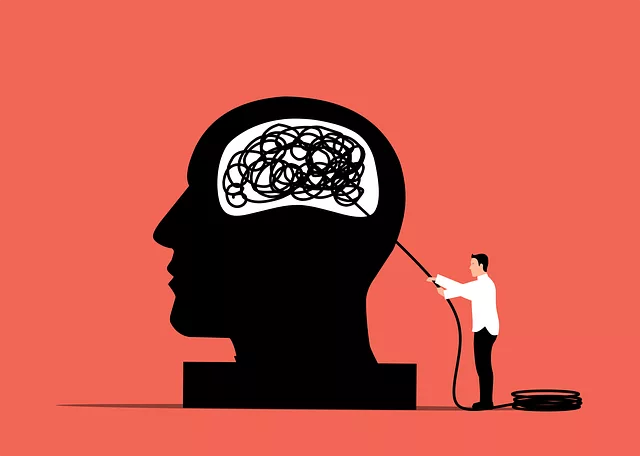Exposure Therapy for Anxiety Treatment:
Exposure therapy is a powerful cognitive-behavioral approach, effectively managing anxiety by gradually exposing individuals to feared situations in a controlled environment. This process promotes desensitization, challenges negative thought patterns, and teaches effective coping strategies. By identifying and ranking fears, patients face triggers in steps, reducing anxiety responses over time. The therapy includes both real and imaginary exposures with relaxation techniques, empowering individuals to overcome fear and adopt better life strategies. Despite challenges like patient adherence, strategic interventions and tailored support significantly reduce relapse risk, leading to lasting improvements and success stories like Sarah's recovery from severe social anxiety. Choosing a qualified cognitive-behavioral therapist certified in exposure therapy ensures effective, safe, and personalized anxiety treatment.
“Unleash Yourself from Anxiety with Exposure Therapy: A Comprehensive Guide. Discover a powerful tool in exposure therapy, offering a transformative approach to managing anxiety. This article explores its effectiveness, providing insights into how it works, step-by-step processes, and real-life success stories. Learn about identifying feared situations, various techniques used, long-term benefits, and overcoming challenges. Find qualified professionals to embark on your journey towards conquering anxiety with exposure therapy.”
Understanding Exposure Therapy: A Powerful Tool Against Anxiety

Exposure therapy is a highly effective anxiety treatment that helps individuals confront and overcome their fears in a safe, controlled environment. By gradually exposing yourself to anxiety-provoking situations or objects, this therapeutic approach enables you to reduce the intensity of your fear response over time. It’s based on the understanding that avoidance reinforces anxiety, while facing fears can lead to desensitization and ultimately, relief.
This therapy works by challenging unhelpful thought patterns associated with specific triggers and promoting a more rational perspective. Through repeated exposure, individuals learn that their feared outcomes are unlikely to occur, thereby reducing anxiety symptoms and improving overall well-being. Exposure therapy has proven successful for various types of anxiety disorders, offering a powerful tool in the arsenal of anxiety treatment methods.
How Does Exposure Therapy Work for Treating Anxiety?

Exposure therapy is a highly effective form of cognitive-behavioral therapy (CBT) specifically designed to help individuals manage and overcome their anxiety. The core principle behind this therapy is gradual exposure to situations, objects, or thoughts that trigger anxious responses. By carefully controlled and progressive exposure, patients learn to confront their fears without experiencing the overwhelming anxiety they typically associate with these triggers.
During exposure therapy sessions, a therapist guides the patient through various scenarios or activities tailored to their specific anxieties. This process starts with less intimidating situations and gradually moves towards more challenging ones. Through this step-by-step approach, patients develop coping strategies and realize that their feared outcomes are unlikely to occur. Over time, they gain a deeper understanding of their anxiety responses, learn to manage their symptoms, and eventually experience reduced anxiety in real-life situations, offering a lasting solution for anxiety treatment.
Step-by-Step Guide to the Exposure Therapy Process

Step-by-Step Guide to the Exposure Therapy Process
Exposure therapy for anxiety involves a systematic approach where individuals gradually face their fears in a safe and controlled environment. This process begins with identifying specific phobias or anxious situations that trigger distress. Once identified, therapists help patients create a hierarchy of these scenarios, from least frightening to most intense. This hierarchy serves as a roadmap for the treatment journey. Patients start by imagining or experiencing milder instances of their anxiety triggers until they build up confidence and coping mechanisms.
As therapy progresses, individuals move up the hierarchy, facing each situation with the support of cognitive behavioral therapy techniques. Therapists guide patients through these encounters, teaching them to recognize and challenge negative thoughts associated with the fear. With each successful exposure, patients learn that their feared outcomes are unlikely, reducing anxiety over time. This step-by-step process allows for a gentle yet powerful approach to anxiety treatment, helping individuals regain control over their lives without relying on avoidance strategies.
Identifying Feared Situations: The First Step in Exposure Therapy

Identifying feared situations is a crucial initial step in exposure therapy for anxiety treatment. It involves recognizing and categorizing the specific environments, activities, or objects that trigger anxiety or cause avoidance. This process allows therapists to create a structured plan tailored to the individual’s needs. By understanding the patient’s unique fears, they can gradually expose them to these situations in a safe and controlled manner.
This identification process often starts with keeping a detailed journal where individuals record their anxious experiences. They note down when, where, and how strong their anxiety feels. This introspection helps reveal patterns and triggers that contribute to their anxiety disorders. Once identified, these feared situations can be ranked based on severity and avoidance, guiding the therapy’s progression.
Facing Fears: Techniques Used in Exposure Therapy Sessions

In exposure therapy sessions, the primary goal is to help individuals confront and overcome their fears in a safe and controlled environment. This involves gradually exposing them to anxiety-provoking situations or objects, starting from less intimidating scenarios and progressively moving towards more challenging ones. Techniques used include live exposures, where patients interact with triggers face-to-face, and imaginary exposures, where they are guided through the scenario in their minds. The therapist might also use relaxation techniques during these sessions to aid in managing anxiety responses, ensuring patients stay calm and focused.
Through repeated exposure, individuals learn that their feared outcomes are unlikely or do not occur at all, thereby reducing the intensity of their anxiety response over time. This process empowers them to challenge negative beliefs and develop more adaptive coping strategies. Each session is meticulously tailored to the patient’s needs, ensuring they feel supported and progressively more confident in managing their anxiety, ultimately leading to effective anxiety treatment.
Benefits of Exposure Therapy for Long-Term Anxiety Management

Exposure therapy is a highly effective anxiety treatment that focuses on gradual and controlled exposure to feared situations, objects, or thoughts. By facing these triggers in a safe environment, individuals can learn to manage their anxiety responses over time. One of the key benefits of this approach is its long-term effectiveness. Many people who complete exposure therapy experience reduced anxiety symptoms for years, leading to improved quality of life and increased overall well-being.
This type of therapy empowers individuals to take control of their anxiety by understanding that it is a learned response that can be unlearned. It helps to break the cycle of avoidance and fear by teaching relaxation techniques and cognitive strategies. As a result, those who undergo exposure therapy often report better coping skills, increased confidence in managing anxiety, and a greater sense of freedom from debilitating fears that once held them back.
Common Challenges and How to Overcome Them in Exposure Therapy

Exposure therapy for anxiety faces several common challenges, but with the right strategies, these can be overcome. One significant hurdle is patient adherence, as facing fears can be profoundly difficult and often leads to avoidance behaviors. To combat this, therapists must foster a supportive environment, ensuring patients feel safe and understood. Techniques like positive reinforcement and gradual exposure steps can motivate individuals to persist, helping them realize that their anxiety responses diminish over time.
Another challenge is the potential for relapse after initial success. This can be addressed by equipping patients with coping strategies and skills to manage stress and anxiety in the long term. Regular check-ins, follow-up sessions, and providing access to resources like support groups or online tools can significantly reduce the risk of relapse. By integrating these practices into exposure therapy, patients are better equipped to maintain their progress and enjoy lasting improvements in anxiety treatment.
Real-Life Success Stories: Exposure Therapy in Action

Many individuals have found real-life success stories through exposure therapy, which has emerged as a powerful anxiety treatment. This approach involves gradually and safely exposing individuals to situations or objects that trigger their anxiety in a controlled environment. By facing their fears step by step, patients learn to manage their responses and reduce the intensity of their anxiety reactions over time.
One such story is that of Sarah, who struggled with severe social anxiety. Through exposure therapy, she began attending social gatherings and public speaking engagements, activities that once terrified her. With each successful interaction, Sarah’s confidence grew, and her anxiety symptoms lessened. Today, she delivers presentations to large audiences, a remarkable achievement that would have been unthinkable before her therapeutic journey. These success stories illustrate the effectiveness of exposure therapy in empowering individuals to reclaim their lives from anxiety.
Finding Qualified Professionals for Your Exposure Therapy Journey

When embarking on an exposure therapy journey for anxiety treatment, finding qualified professionals is a pivotal step. Look for therapists who are certified in cognitive-behavioral therapy (CBT) and have specialized training in exposure therapy. Check their credentials, experience, and whether they have worked with individuals facing similar anxiety challenges as you. Reputable professionals will create a safe, supportive environment to guide your process.
Consider recommendations from trusted sources or seeking referrals from healthcare providers. Online directories and mental health platforms can also help identify specialists in your area. Ensure the therapist aligns with your treatment goals, communicates effectively, and adapts strategies to meet your unique needs. A strong therapeutic alliance is key to navigating the exposure therapy process successfully and achieving long-term anxiety relief.
